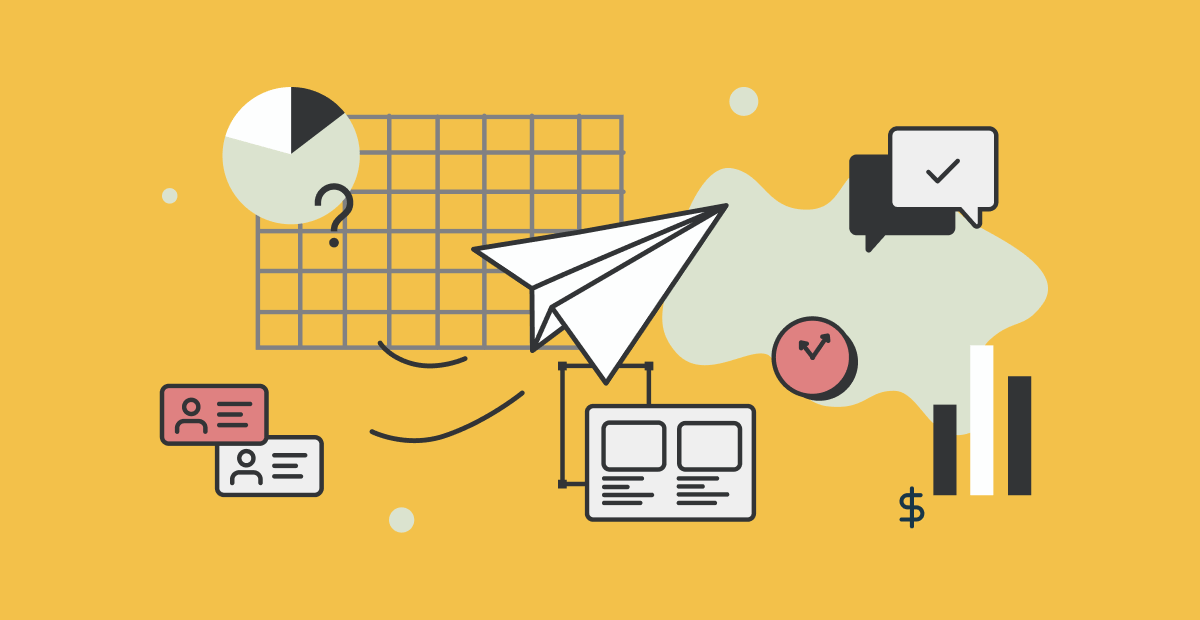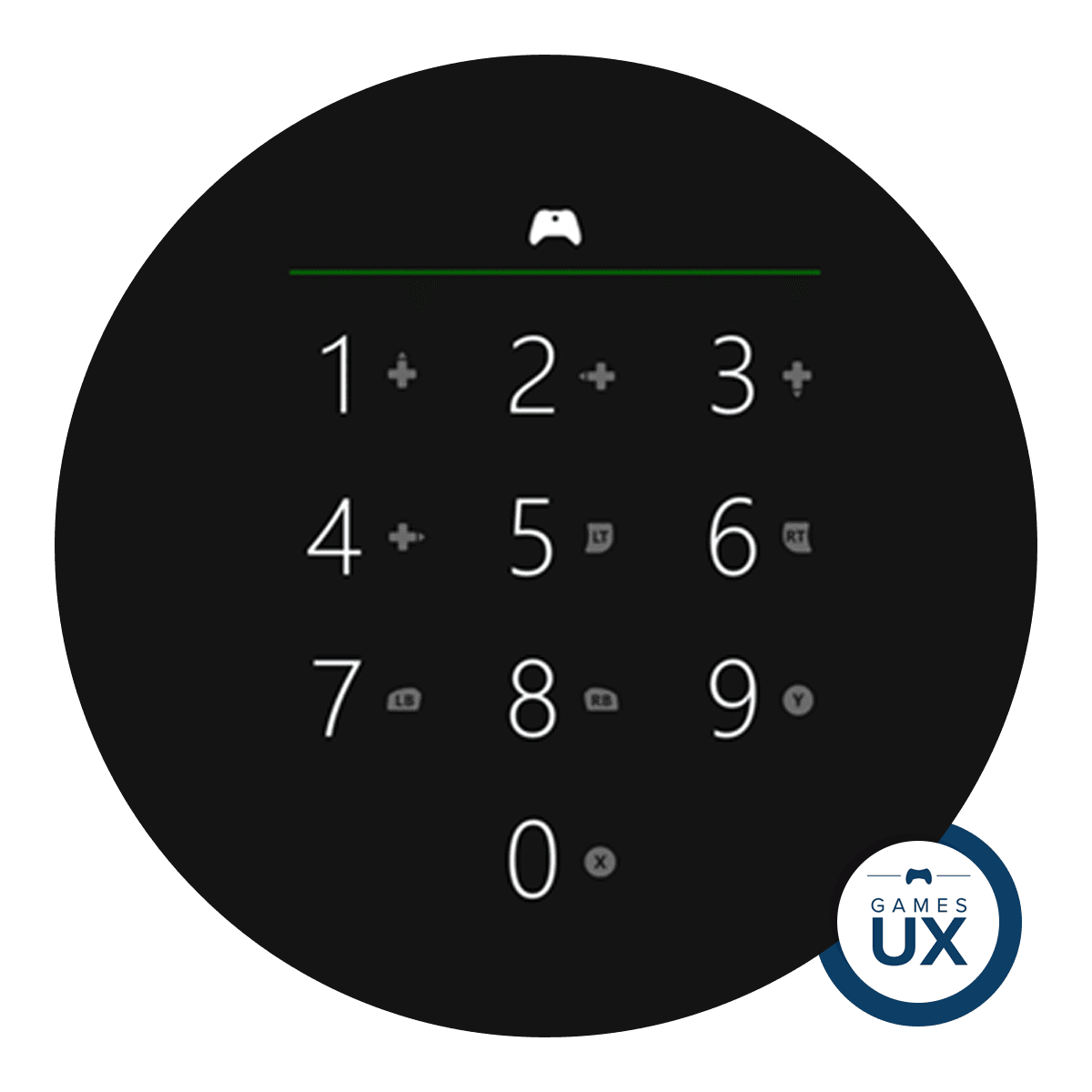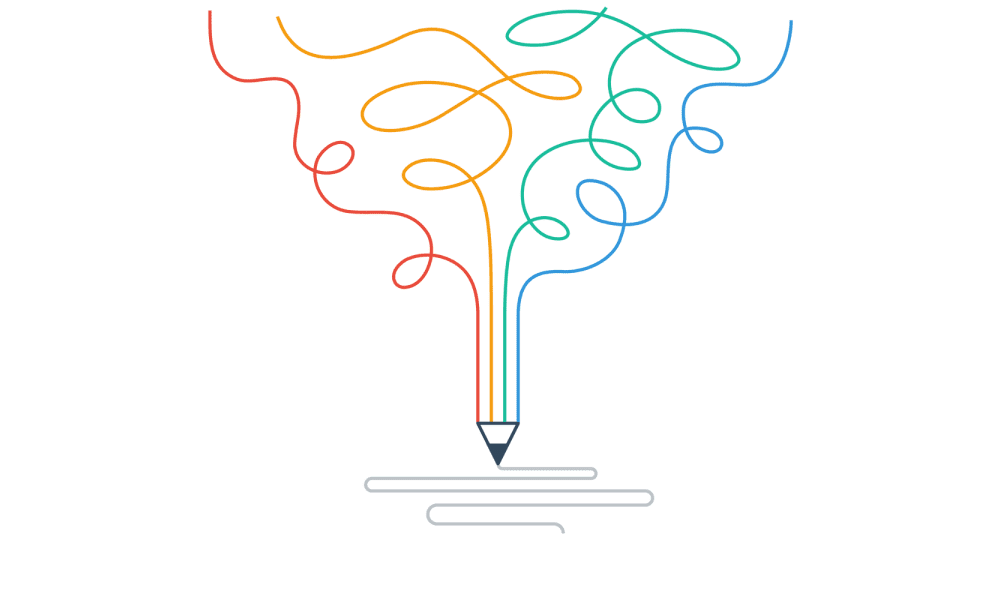Meet Maria.
She’s sitting at her desk, thinking about the design project she launched a few weeks ago.
Maria is a talented designer. She has good intuition and a solid understanding of design principles.
But her latest project hasn’t gone off well. There have been more customer complaints than usual. And what’s worse, the complaints have turned out to be completely valid. She’s already had to redesign a few things. And this isn’t the only time this has happened.
Lately, Maria has been hearing a lot about user research: user interviews, journey maps, usability testing, and so on. This is all new to her, but Maria’s gut is telling her it might be part of the answer to her problems.
She wonders if she should make the effort to add user research into her process.
Is it worth it? What should Maria (and cough you) do?
In this article, we’ll dive into the answer.
What’s first?
You can come at UX design from lots of different directions.
There’s aesthetics-first. That’s when the designer’s whole goal is to make something that looks appealing. There’s lots of that on the web.
There’s company-first. That’s when design decisions are based on business metrics, and everything else is set aside. As a user, you can feel when this is the case, and it can lead to issues like dark patterns.
There’s designer-first. This one’s trickier to spot. It’s when the designer bases everything on their intuition and what they want the product to be. It’s grounded on the talent and opinion of whomever the designer happens to be.
Then there’s user-first. This is when decisions stem from the problems, preferences, and needs of the product’s end user.
In my view, user-first is the best way to go.
A digital product exists because it provides value to a user. So serving that user is in the best interest of all involved, including the business and the designer.
That is the scenario in which all parties win. And it leads to the best design result because design isn’t decoration—it’s problem solving.
“People ignore design that ignores people.” – Frank Chimero
Let’s be clear: there is nothing wrong with aesthetics, or business goals, or the designer. Those are all essential pieces to the puzzle. We don’t want to over-prioritize to the point where the business suffers. That’s counter-productive.
What I’m saying is the foundation should be users—they should be at the heart of every design decision from the very beginning. It starts and ends with them because your business starts and ends with them.
Here’s the bigger point
What I’ve described above is becoming widely adopted across companies of all sizes and industries. It makes sense. Maria would agree. Chances are you would, too.
But here’s the thing that Maria and lots of other people don’t realize—and if you take away one thing from this article, it should be this:
If you want to build in a user-first way, it’s not enough to try to be empathetic and imagine yourself in your user’s shoes. No matter how talented you are as a designer, no matter how good your intuition is, no matter how well you understand design principles, you will always need tools and techniques to get there. In other words:
User research is the only path to real user-first design.
This is, after all, why the tools and techniques of user research exist in the first place. They were specifically created to put the user at the core of our designs.
Why is this?
Let’s look at six reasons why user research is fundamental to user-first design.
It helps you get over yourself

The false consensus effect causes people to “see their own behavioral choices and judgments as relatively common and appropriate.” In UX this means you think your thoughts, beliefs, and actions are the same as your user.
This is a trap.
For example, let’s say you’re a designer at Strava. Running is your biggest hobby, and you use Strava to track everything.
Does this mean you are the user and therefore don’t need to do any research? No, because you are not a normal user.
You know too much about technology and you definitely know too much about your project. You’re too close to it. You think about it through a different lens. And you can’t take all this stuff out of your brain and set it aside while you’re designing.
Our knowledge and experience keep us from seeing things through the eyes of our users. And the only way to get past that is via research and testing.
It’s easy to forget these concepts and get caught up in our own minds. I’ve done it lots of times.
But anything you put out into the world without user research is simply guesswork. Even the most well thought out designs are just assumptions until they are verified by real data and end users.
Let’s aim for groundwork, not guesswork. Let your users point the way.
It unlocks valuable data

Research opens the door to hard facts. You’re no longer making decisions based on hunches. You can validate and verify your designs with empirical data.
Even a tiny amount of data vastly improves the probability of making the correct design decision.
And here’s the thing: this data is out there, ready for the taking. But you’re walled off from it until you perform research.
Learn how to put your assumptions aside, do research, and ask the right questions, and the data is yours.
It’s feasible for anyone

User research doesn’t have to be big, long, complex, or expensive.
In the past, there’s been a false belief that all user research has to be a fully-fledged psychology experiment where a team of Ph.D.’s with an enormous budget perform mind-numbing investigations in a formal lab.
But in the real world, user research can (and should) be light and fast. Research tools and techniques have evolved along with technology, and you can change the cost and scale to meet your specific needs. It can be integrated into even fast-moving projects.
For example, prototypes are easy and cheap to make. And a very effective usability test can be done in a couple of days.
It’s efficient

What research does is help you understand what the user wants right now, instead of later via support complaints (like Maria). You identify red flags, opportunities, and user reactions in advance. You discover what works and what doesn’t upfront so you can course-correct and iterate quickly, before putting time into the final product.
With each round of testing, analysis, and prototyping, the design improves based on hard facts about what works and what doesn’t. Your design and development teams don’t waste time creating something that won’t satisfy the people using it. They create efficiently, building in a direction that is much more certain to succeed.
In short, you match your designs to real-world use so that you get to the ideal version the first time. It saves you the costly design and development time that comes from having to deploy rebuilds and fixes.
It’s economical

User research is an investment. It’s part of the long-game of creating a great digital product. It pays off with multiple gains (including monetary) over time.
One of the biggest ways you save money is by fixing UX problems before they ever happen. Think about the costs associated with development hours, or with an issue identified late in the game that has to be corrected quickly and retroactively.
Research also strengthens a product’s potential to succeed. Products that win are those that help users accomplish what they want in a better way than competitors.
UX directly affects metrics like conversion rates, adoption rates, customer loyalty, and growth. And more success means more revenue.
It’s convincing, motivating, and unifying

This is because research…
- Is not from you. It’s from a third party, your user—the most important third party of all.
- Is based on real results and data, not hunches. It can be hard to get behind someone’s opinion, but everyone can get behind numbers.
- Allows you to measure things, compare between options, and validate your decisions.
You, your team members, and your superiors can all have confidence that you’re making the right decision when you perform research. You’re not basing it on a gut feeling or someone’s personal opinion. This aligns everyone—it builds consensus.
For example, imagine showing your team a video recording of a usability test with a real person who’s struggling to complete a task with your product. Everyone in that room will walk away knowing it’s a problem and motivated to make the required changes.
What this looks like
Let’s get back to Maria. That day at her desk she resolved she would make a serious effort to start using research.
Over the next year, she picked up one skill here, another there. It wasn’t perfect. In fact, it was a bit messy sometimes, and she still has a lot to learn.
But it’s slowly becoming part of her process. She’s using techniques like user interviews, empathy maps, and card sorting. She’s building user flows and prototypes and doing usability testing with them.
At first, it was hard to get her coworkers on board with the importance of this stuff. But over time, both Maria and her team have begun to see the benefits.
She’s finding that communication and decision-making are more simple. It’s getting easier and easier to come to a consensus about what the team should do because they have real data to back it up.
They’re spending less time on redesigns and fixes, and more time on new features.
There are fewer complaints and more praise from users. They’re seeing a healthy number of new users and retention.
Are there still issues and mistakes? Of course. There are just fewer of them.
Maria’s happy with where things are headed. She’s more confident with the designs she’s putting out and most of all, she has clear data that confirms it’s a better user experience.
Tying things off
Compared to other design professions, UX has a myriad of tools that make it quick and easy to get usable data and make the right decisions. It’s a unique advantage.
We don’t need to be perfect at research. But if you work on implementing it and place the user at the heart of your design process, things turn out considerably better.
Know someone who should read this? Share it with them.
🎙 There’s lots of chatter these days about the importance of user research.
But is it worth the effort?
THREAD#⃝design pic.twitter.com/jpHhWZdNcV
— Learn UXD (@learn_uxd) December 8, 2020
Subscribe to the Learn UXD newsletter for more posts like this.


 Buy me a coffee
Buy me a coffee



